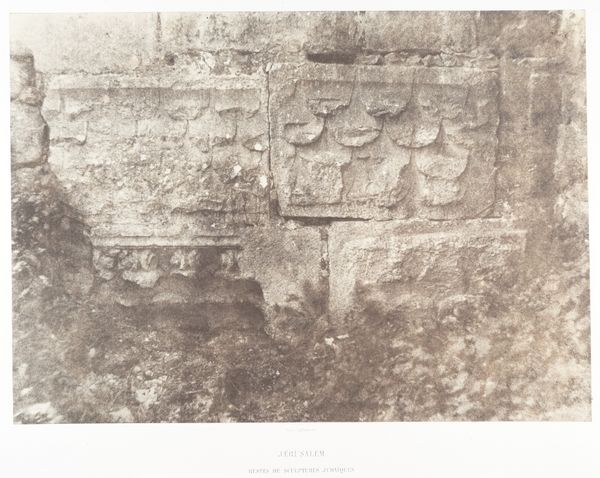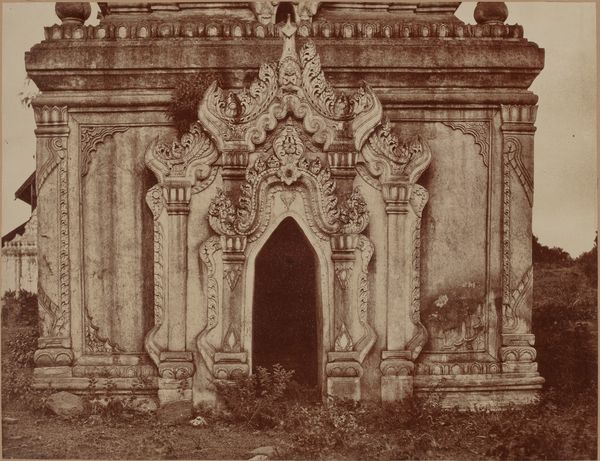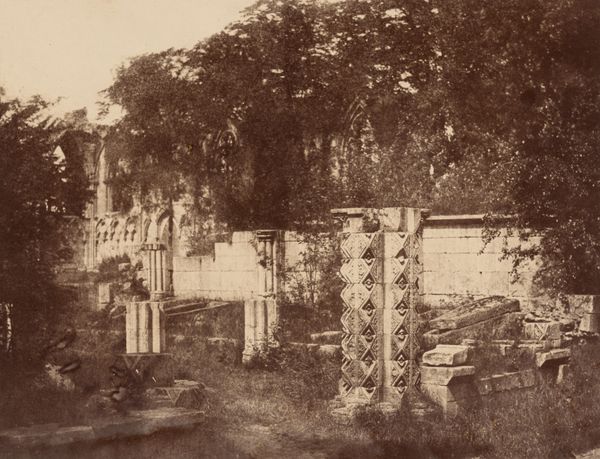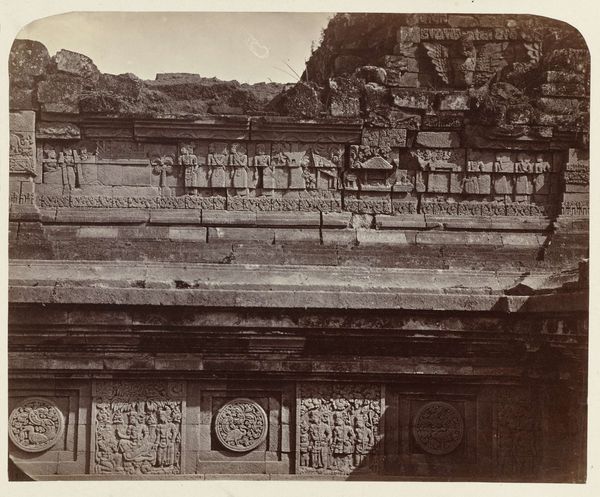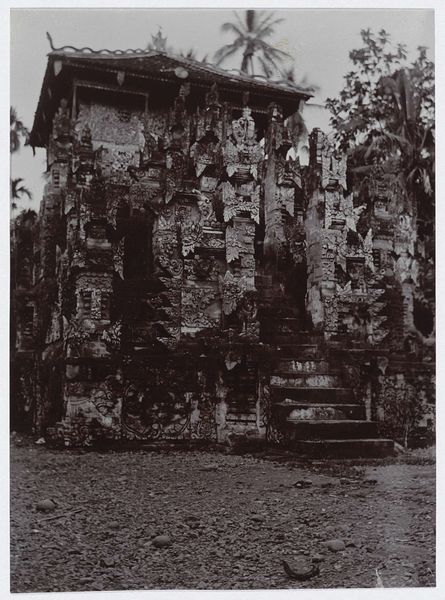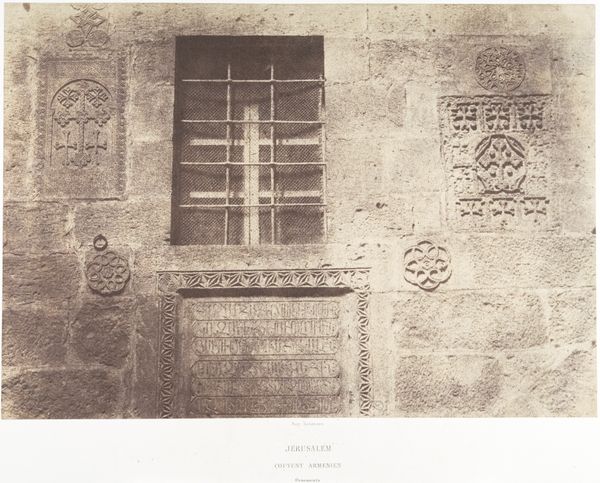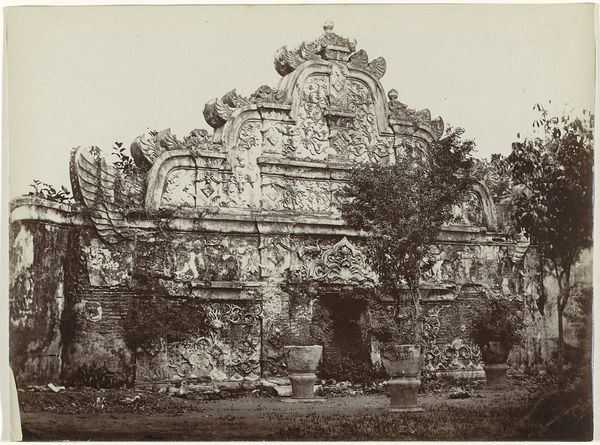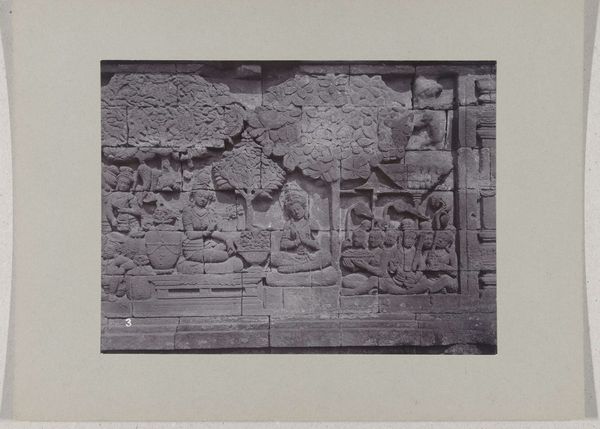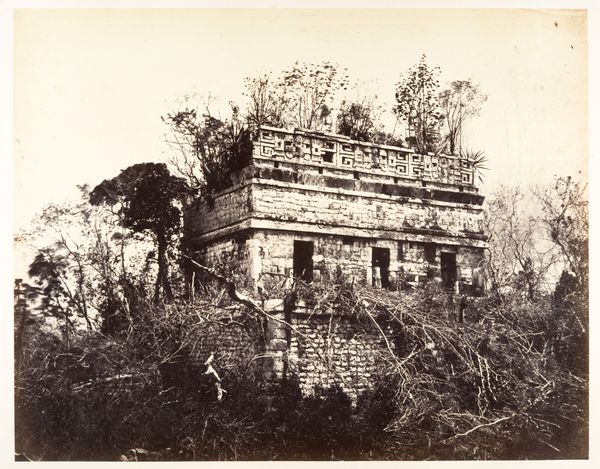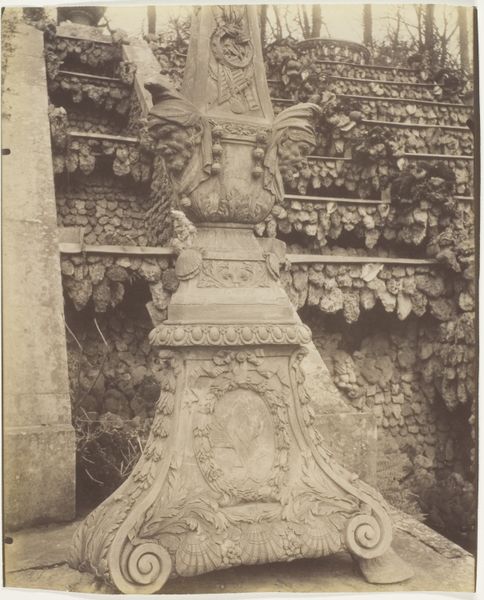
Uxmal, Indian Bas Relief, Nun's Palace (Uxmal, Bas Relief de l'Indien, Palais des Nonnes) 1860
0:00
0:00
photography, architecture
#
historic architecture
#
traditional architecture
#
photography
#
city scape
#
19th century
#
architecture
#
historical building
Dimensions: 40 × 27 cm
Copyright: Public Domain
Editor: Here we have Désiré Charnay’s 1860 silver print, “Uxmal, Indian Bas Relief, Nun’s Palace”. It feels like a really early example of architectural photography, and the texture of the stone is just incredible. What do you see in this piece? Curator: I see the gaze of a colonizer attempting to document and, in a sense, claim ownership over indigenous history. The ruins become a spectacle, a relic to be analyzed and displayed through a Western lens. What does it mean to frame this as the “Nun’s Palace,” imposing a Western concept onto Mayan architecture? Editor: That’s a perspective I hadn’t considered. So, you’re suggesting that even the act of photographing the site is an act of cultural imposition? Curator: Precisely. Charnay is not just capturing an image; he is participating in a discourse of power. The image serves to reinforce the narrative of European superiority and the supposed decline of indigenous civilizations, subtly erasing the ongoing cultural relevance and resilience of Mayan people. The seemingly objective photographic “truth” becomes complicit in this narrative. Editor: Are there any elements within the image itself that speak to that? Curator: Consider the romantic, almost melancholic light. It casts the ruins in a way that emphasizes decay and distance. What is lost when we are looking at Mayan artistry through the light and composition that serves colonial purposes? Also, I'd like to ask how silver printing has to do with it? Editor: Because the silver relates to wealth, to the plundering of resources and... I see. I think I’m starting to understand the complexities inherent in even seemingly straightforward documentation. Curator: It's about recognizing the power dynamics embedded within representation. Editor: Definitely gives me a lot to consider about perspective and responsibility when viewing historical images.
Comments
No comments
Be the first to comment and join the conversation on the ultimate creative platform.
